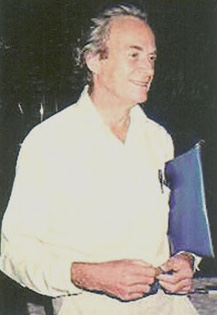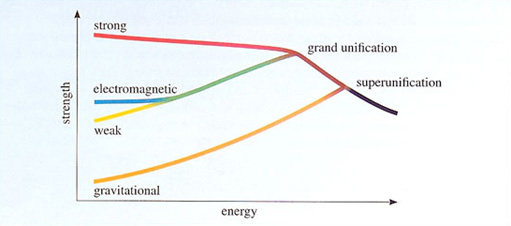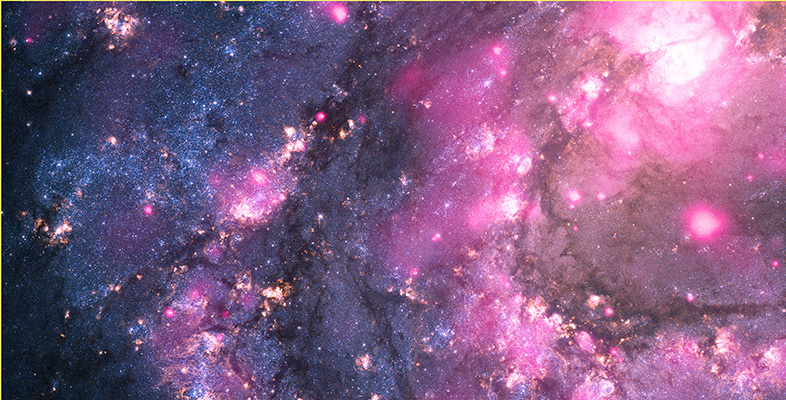Richard Feynman
Richard P. Feynman (1918-1988)

Richard Phillips Feynman was one of the most colourful and celebrated of US physicists. He was born in New York in 1918 and educated at the Massachusetts Institute of Technology (MIT) and Princeton. From 1942 to 1945 he was involved in the atomic bomb project at Los Alamos, where he gave ample evidence of his enormous technical virtuosity, as well as earning himself a reputation as a practical joker.
After the Second World War, Feynman went to Cornell University where he became one of the major figures in the development of quantum electrodynamics (QED). During this period he also devised his own approach to quantum mechanics called the 'path integral' or 'sum over histories' approach. This has since been applied to quantum field theory and is now the standard formalism in many areas of the subject.
In 1950 Feynman moved to the California Institute of Technology (Caltech) where he remained for the rest of his life. While there, he worked on many topics, including the theory of fundamental particles, the theory of superfluidity and the nature of the forces and interactions within the atomic nucleus. He became renowned as a teacher of physics, combining profound physical insight with a very down-to-earth style. Towards the end of his life, when already ill with cancer, he was invited to join the commission investigating the in-flight explosion of the space shuttle Challenger. As part of that work he memorably demonstrated, in front of a massive TV audience, the disastrous effect of low temperature on the booster rocket's O-ring seals by dropping one of them into a glass of iced water.
Feynman will long be remembered as one of the twentieth century's greatest exponents of intuitive - yet highly rigorous - physics. The three volumes of Feynman Lectures on Physics from his Caltech years, and Feynman's autobiographical works 'Surely You're Joking Mr Feynman!' and 'What Do You Care What Other People Think?' also ensure that he will be remembered as a character of extraordinary insight, wit and charm. In 1965 Feynman shared the Nobel Prize for Physics with Julian Schwinger and Sin-itiro Tomonaga.
The completion of QED presented physicists with the most precise theory of Nature they had ever possessed. However, by the time that completion had been achieved it was already clear that electromagnetism and gravitation were not the only forces at work in the world. The familiar contact forces you feel when pressing on a surface had long been understood to be nothing more than manifestations of electromagnetism - atoms repelling other atoms that got too close - but the 1930s and 1940s had provided clear evidence of the existence of two other fundamental forces. These new forces were quite powerful, but both were of such short range that they mainly operated within atoms rather than between them. The new forces were called the strong and weak nuclear forces since their effects were most clearly seen in the behaviour of atomic nuclei. The major properties of all four of the fundamental forces are listed in Table 1.
| Force | Strength | Range | Force carrier |
|---|---|---|---|
| strong | 10−1 | 10−15 m | gluon |
| electromagnetic | 10−2 | infinite | photon |
| weak | 10−2 | 10−17 m | W and Z bosons |
| gravitational | 10−45 | infinite | graviton(?) |
Formulating quantum field theories of each of the four fundamental forces was an obvious goal, and remains so to this day. Three of the forces - the strong, the weak and the electromagnetic - have been treated with great success; and have been combined to form a so-called standard model of fundamental forces. However, gravity has resisted all attempts to fit it into the same kind of theoretical strait-jacket and seems to require very special treatment if it is to be treated as a quantum field theory at all. If it were not for the problem of gravity we would be able to say that the physicist's current world-view is that the Universe consists of a set of mutually interacting quantum fields that fill the space-time described by special relativity. But it seems that this will not do.
A way forward may be indicated by the standard model itself. The standard model is actually something more than a description of three of the four fundamental forces: it is also to some extent a prototype for their union. Within the standard model, the electromagnetic and weak forces appear as a unified electroweak force. The exact meaning of unification in this context is too technical to go into here, but suffice it to say that, under unification, the quantum fields responsible for the weak and electromagnetic forces combine in a way that is slightly reminiscent of Einstein's fusion of space and time to form space-time.
The success of electroweak unification has been one of the motivations for suggesting that all three of the forces that appear in the standard model might be unified within a grand unified theory, and that a further step of unification might also incorporate gravity, thus bringing all four fundamental forces within a single superunified theory. The form that such a superunified theory might take is far from clear. Would it involve quantum fields in a curved space-time, or would something altogether more radical be required?

For some time many hoped that an approach called string theory might provide a solution to the problem of superunification. The idea of this approach was that the basic entities were not quantised fields that filled the points of four-dimensional space-time, but rather extended objects called strings that vibrated in ten or more dimensions. There was never any experimental evidence to support this idea, but what really caused theorists to lose faith in it was the discovery that string theory is not unique. There is a strong prejudice amongst those searching for a unified theory of everything that there should only be one such theory, not a whole class of them. String theory fails to satisfy this uniqueness criterion. However, hope of string-based superunification has not been entirely lost. A new subject called M-theory is being investigated in which all of the plausible string theories appear as different aspects of a single theory - perhaps.
At present, the quest to find the ultimate constituents of the Universe and the laws that regulate their behaviour ends not with an answer, but with a set of loose ends. Perhaps this is as it should be in a healthy science, or perhaps it is a sign that we are heading towards a dead end. Perhaps there is no single world-view for physics to uncover, or perhaps it is not the function of physics to do so.
Question 7
Does quantum field theory suffer from the same kind of conflict with simple realism that arose in quantum mechanics?
Answer
Quantum field theory is based on the idea of intrinsic probability, just as ordinary quantum mechanics is. It therefore raises exactly the same questions about simple realism.
